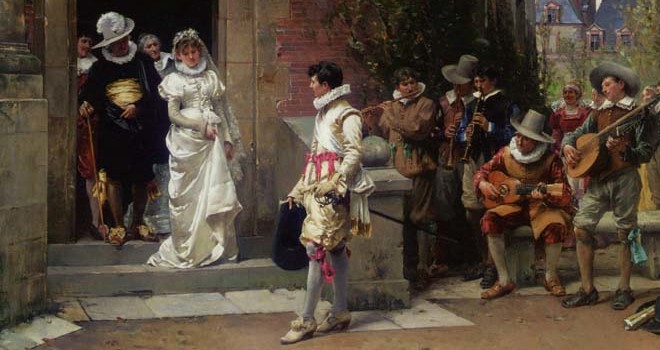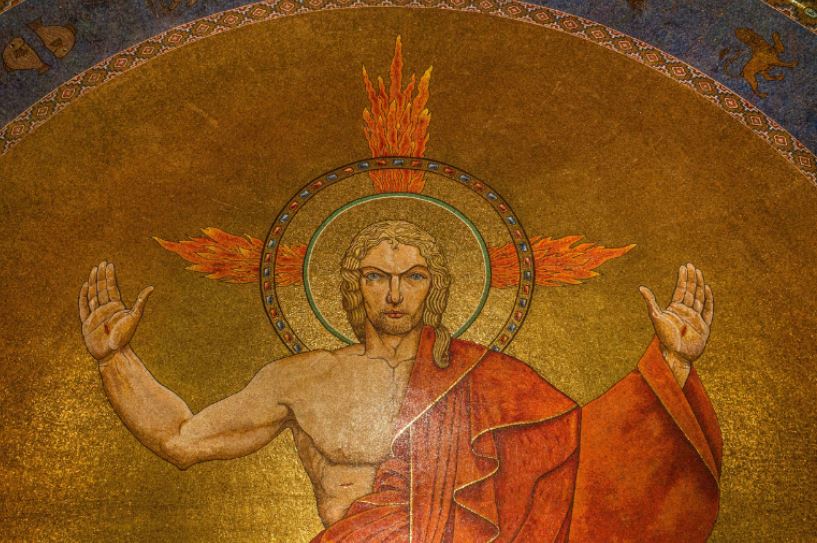Jane Austen’s Common Sense Wisdom on Marriage and Family

Stop Imposing Your Morality!
July 9, 2018
Catholic Bishops’ Support For Open Borders Hides Self-Serving Politics
July 9, 2018
By Robert B. Greving, Crisis Magazine, July 9, 2018
 When one is looking for a good dose of reality and common sense, there are few better places than a Jane Austen novel. Entertaining they are, but also scattered with drops of wisdom that run counter to our modern notions. For example, take the idea of “change” (often coupled with “hope”); today that idea is loaded with political activity and sexual diversion. But what really brings about change? As Miss Austen states in the first chapter of her novel Emma: “Matrimony [is] the origin of change.”
When one is looking for a good dose of reality and common sense, there are few better places than a Jane Austen novel. Entertaining they are, but also scattered with drops of wisdom that run counter to our modern notions. For example, take the idea of “change” (often coupled with “hope”); today that idea is loaded with political activity and sexual diversion. But what really brings about change? As Miss Austen states in the first chapter of her novel Emma: “Matrimony [is] the origin of change.”
First, we need to be clear about what Miss Austen meant by matrimony. As a devout Christian, she meant, as we all did not so long ago, one man married to one woman for life. Born the seventh of eight children of an English country curate, she herself never married but lived with family all her life. She knew that nothing produces more change and requires more hope than a marriage of one man to one woman for life.
I’m preaching (mostly) to the choir here, I know, but is there anything more dynamic, more life altering, more full of twists and turns and diversity (yes, diversity!) than life in a large family? What does, or should, change you more than marriage? What changes a marriage more than children? Whether it be the constant change of diapers and sleeping habits, the first name basis one acquires with the staff at the emergency room, the roulette wheel of “What shall we do without this month?” or a host of other events, life never stands still for a committed family.
It’s another example of how the Gospel is counterintuitive. If you want to live, you must die; if you want to be great, you must be small. And here, if you want change, be committed.
The Sexual Revolution hasn’t changed society; it has broken it. (I suppose one could equate breaking something with changing it, but I shouldn’t try that with a lightbulb.) It has sought change with the idea that we shouldn’t have to change. In other words, selfishness. It’s not change, it’s stagnation. It doesn’t foster hope, it fosters despair. For example, the couple living together and contracepting: when they get married they don’t want change, they just want presents. Contraception doesn’t bring about change. The whole idea is that each child comes along when, where, how, and why it is “wanted.” In other words, so the parents have to change as little as possible. The only real change it has brought about is a huge increase in parentless children and irresponsible parents. Abortion doesn’t bring about change; it is simply the final solution—in more ways than one—to the “wanted” child. The homosexual culture doesn’t bring about change; it takes the act of reproduction (a huge change) and blunts it. (You don’t get light when you put a lightbulb into another lightbulb.)
For there to be change, another word for which is growth, there must be stability coupled with potency; there must be soil and seed. Contraception renders the seed impotent, abortion uproots it; the homosexual culture ensures it is planted in barren soil. A culture that embraces these has embraced stagnation and despair, as can be seen in the rise of substance abuse, spousal abuse, depression, and suicide in Europe and America (and soon to be Ireland). The contraception-abortion-homosexual culture doesn’t want change; it doesn’t want diversity. It wants diversion. More games, more “apps,” more screens, more things. But things don’t bring about change, people do.
Now, I don’t mean to say that life in a “traditional” family is a Brady bunch roller coaster adventure that always has a happy ending. To the contrary, it has more (or at least has the potential for more) sorrow, heartache, and disappointment, not to mention poverty, sickness, illness, and other complications, than anything else in life. Ask any family with a disabled child, or a child with Down syndrome, or a child struggling with substance abuse, or a parent who has lost his or her job, or any number of problems that only come when we allow another into our life. It can make life hard, really hard.
How does the family—that most conservative and traditional of institutions—foster change and hope? It’s self-evident from the above. What brings more change than another human being? Each child is a revolution. All great change has been brought about by a person. It’s axiomatic. An effect can never be greater than its cause, and for all the great technological changes that have come about, they’ve all come about because of a person. Anyone with a child and a modicum of responsibility will tell you that life is never the same when that little one comes along. And the more little ones that do, the more change there is. That is why there must be stability in the family; there must be a “bedrock” of a mother and father. Without that, it’s like trying to grow a flower in a broken pot; everything gets washed away.
As I said before, this life—in a committed marriage open to children—is really hard. It can engender frustration and resentment. That is why it also requires the virtue of hope. The contraception culture does not require hope; everything is “planned.” (Or so they think, till the couple discovers after birth that the child has autism; but the philosophy of Peter Singer and Planned Parenthood would even let you take care of that “change.”) The abortion culture snuffs out the hope. The homosexual culture doesn’t even want hope to enter into the picture.
Hope is the Divine “Nevertheless.” With children, the material emphasis is often on the “less”; less vacation, less haircuts and hairstyling, fewer new cars, less—any?—dinners out, and so much more. But the spiritual emphasis is on the “never”; never give up, never give in, never quit; it’s not about me. Those who contracept, abort, and engage in “lifestyles” devoid of growth don’t want change and have little, if any, hope. Instead, they live on fear and foster despair because that is what happens when you can’t face change. The family that is open to children fosters hope; it teaches its children that, no matter what happens, we have hope. We have hope that we can make it through, we have hope that we can live with fewer things, and, above all, we have hope in you, our children, because we brought you into this world and didn’t give into the fear of the revolution this would cause.
Back to Miss Austen. You know, she never wrote a scene in which men were talking only to men. Her reasoning was simple: How do I, being a woman, know what men talk about when they are alone? That may be the reason she never carried her novels beyond the marriage of their protagonists; not ever having been married, she wouldn’t presume to detail the private life of a married couple. It is significant, though, that in her novels the characters who reach the point of the possibility of having a happy marriage must change significantly, and they must do so relying chiefly on the virtue of hope. Knowing that matrimony is the origin of change, she knew that this virtue must be preeminent in those entering into matrimony. As a teacher at an all-boys school, I am often chided for recommending her novels to the students. I make no apologies. She knew what she was about; more than our culture does.
Editor’s note: Pictured above is “After the Wedding” painted by Adrien Moreau (1843-1906).
_______________________________
Robert B. Greving teaches Latin and English grammar at The Heights School in Potomac, Maryland. Mr. Greving served five years in the U.S. Army J.A.G. Corps following his graduation from Dickinson School of Law. After military service, he returned to Dickinson to study Latin and Greek. Originally from North Dakota, Mr. Greving earned a B.A. in history at Louisiana State University




